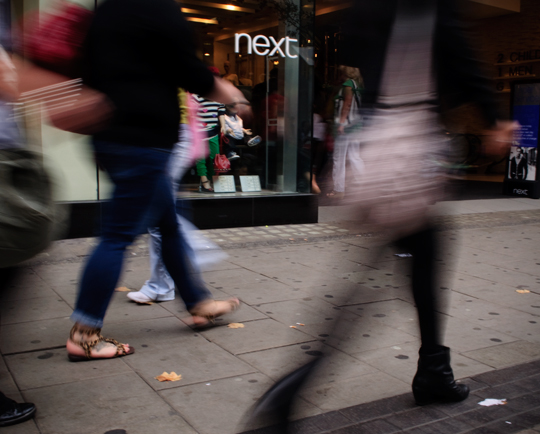Household Bills
Tough times on the UK high street

UK consumers are feeling the pinch, with retail sales dropping 1% year-on-year from October 2016. It’s in marked contrast to a year ago, when sales were up 1.7%.
The data from the BRC-KPMG Retail Sales Monitor shows retail sales growing at the slowest pace since May.
Non-food items were hit particularly hard. Over the three months to October 2017, sales of non-food items, such as clothing, declined 2.9% on a like-for-like basis. On a 12-month basis, the total decline was 2.1%, the deepest since the Monitor started in January 2012.
Food sales, in contrast, were stronger in the three months to October, as they increased 2.4% on a like-for-like basis and 3.7% on a total basis. This remains ahead of long-run averages.
Online sales continued to take a larger share of the market. The percentage of online sales among the whole market increased from 22.6% in October 2016 to 23.7% in October 2017, the highest since December 2016.
The weakness of the high street is reflected in the performance of some of the UK’s leading retailers. For example, Next shares fell more than 7% yesterday after it announced third quarter sales significantly behind expectations, blaming the weather for volatile trading.
At the same time, struggling fashion chain New Look reported a half-year loss of £10.4m in the six months to 23 September as sales dropped 8.4%, compared to a £59.3m profit in the same period last year.
Inflation bites
Helen Dickinson, chief executive, British Retail Consortium, said: “It was a meagre month in October for retail sales as shopping activity slumped. With total growth at its lowest since May and below the 12-month average, retailers will have cause for concern as they prepare for the crucial run up to Christmas.
“The decline was driven by the worst performance of non-food sales since our record began in January 2011, as consumers appear to have opted for outdoor experiences and excursions during half-term, over visits to the shops. The growth in food sales meanwhile, adds some colour to this otherwise anaemic picture, but these figures are very much buoyed by inflation.”
She said real consumer spending power has been on a downward trend in the last year on the back of higher inflation. Many consumers now face higher borrowing costs following the recent interest rate rise, putting more pressure on household finances.
Paul Martin, head of retail at KPMG, added: “October marked yet another reversal of fortunes for retailers, reinforcing just how volatile consumer spend has been. Despite the positive picture last month, these latest figures will be a real disappointment and not the start to the golden quarter retailers had hoped for.
“Overall growth online was lacklustre at best, although health and beauty products continued to stand out as a strong performer. The burning questions for retailers will be whether shoppers are holding off their purchases until Black Friday, and whether retailers can recover from this month’s poor performance to end the year on a high.”
Alex Marsh, managing director at Close Brothers Retail Finance, said: “Consumers continued their reluctance to invest in big ticket items in October, as non-food retail sales saw further decline. Despite a record low rate of unemployment, a lack of real wage growth meant consumers had to rein in their spending and focus on just the essentials. In particular, our data showed sports and leisure retailers saw a drop in sales as the winter months set in, while retailers selling furniture, car parts and car accessories saw an uptick.
“Retailers must take note of the forces that could further affect shopping habits in the coming months. The prolonged Brexit negotiations are clouding consumer confidence, and coupling this with a rise in interest rates, we could very well see consumers tightening their belts even further just at the time when retailers are banking on Christmas shopping. Offering flexible payment methods is one way retailers can combat this.”